On View
Artist Mark Bradford Unveils His Largest Work Yet, a Civil War Cyclorama at the Hirshhorn
The artist's homecoming, after a critically acclaimed pavilion in Venice, doesn't lack for ambition—or size.
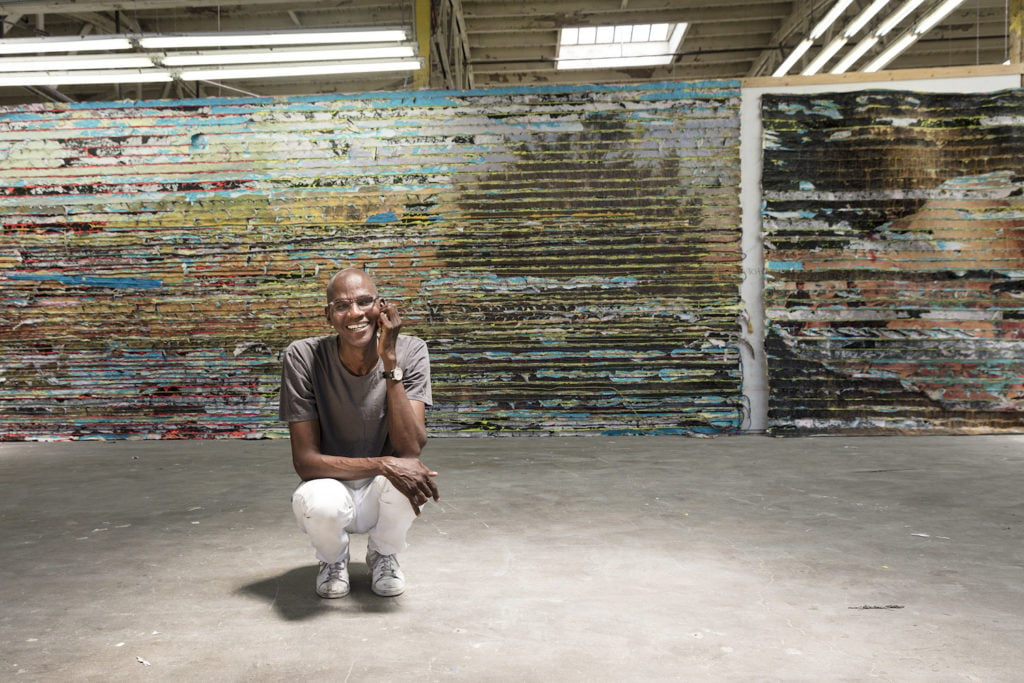
The artist's homecoming, after a critically acclaimed pavilion in Venice, doesn't lack for ambition—or size.

Sarah Cascone

For some artists, following up the high-profile opportunity to represent their country at the Venice Biennale is a tall order. Not for Mark Bradford, apparently. On the heels of his critically acclaimed showing in Italy, the 55-year-old painter is going even bigger: Yesterday, he unveiled his largest work ever, titled Pickett’s Charge, at the Hirshhorn Museum and Sculpture Garden in Washington, DC.
Made from eight canvases, each 12 feet high and over 45 feet long—nearly 400 feet in total—the monumental work is based on Paul Philippoteaux’s The Battle of Gettysburg (1883). Depicting the failed infantry assault Pickett’s Charge, led by the Confederate Army on the last day of the pivotal 1863 namesake battle, the artwork is a cyclorama, a 360-degree panoramic image meant to be viewed inside a cylindrical room.
“Mark Bradford has created a work that draws from America’s tumultuous history with the fearlessness he has shown throughout his career,” said director Melissa Chiu in a statement. It’s another high-profile exhibition for the museum, which recently hit 1 million visitors for the year, nearly doubling its recent annual attendance, on the strength of its Yayoi Kusama blockbuster.
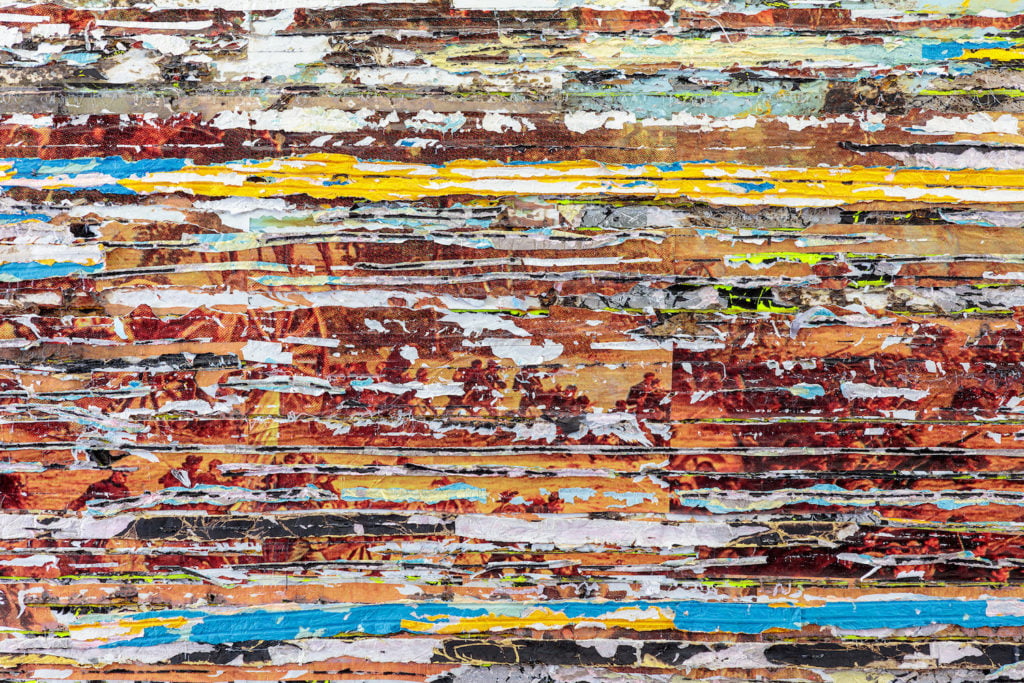
Mark Bradford, Pickett’s Charge (Battle), 2016–17 (detail). Photo courtesy of the artist and Hauser & Wirth/photographer Joshua White.
A work of this magnitude requires considerable resources—the most essential of which might be space. Luckily, Bradford’s studio, housed in a former metal-manufacturing facility in Los Angeles, is no less than 50,000 square feet.
Gettysburg is considered the turning point in the Civil War, marking the northernmost advance of the Confederate Army. The divisive and bloody conflict, of course, is in the news of late as the movement to remove Confederate monuments across the South gains momentum. But Bradford isn’t just responding to the news cycle—he conceived of the work, now some two-and-a-half years in the making, back in 2015.
“Politically and socially, we are at the edge of another precipice. I’m standing in the middle of a question about where we are as a nation,” said Bradford in a statement.
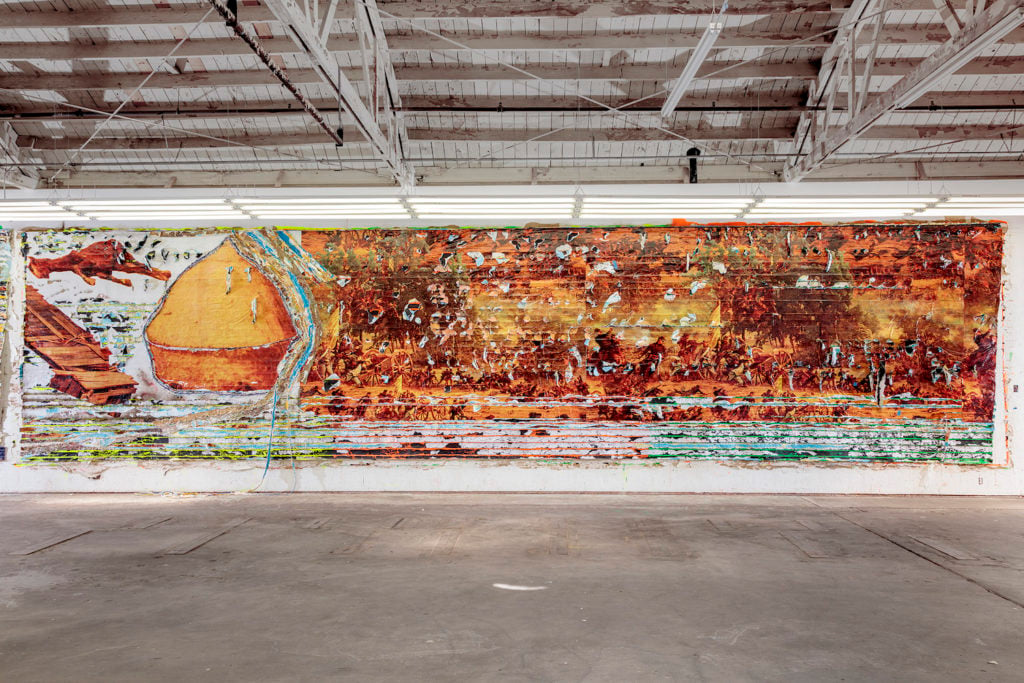
Mark Bradford, Pickett’s Charge (The Dead Horse), 2016–17, installed in the artist’s studio. Photo courtesy of the artist and Hauser & Wirth/photographer Joshua White.
“I’ve always been a history buff, and I love those early American paintings,” Bradford told the Washington Post. “Cycloramas were really like early Imax theater. People lined up to have these experiences, to see these paintings that told big, heroic stories.”
“I like the idea of putting the citizens or the viewer inside the middle of my artwork, at the center of the hurricane,” he added in an interview with CNN.
The idea of the cyclorama, popular in the late 19th-century, was to transport the viewer to the center of the action. At the Hirshhorn, however, Bradford’s version of the piece is on view in one the museum’s circular Inner Ring galleries, where there literally is no center of the room.
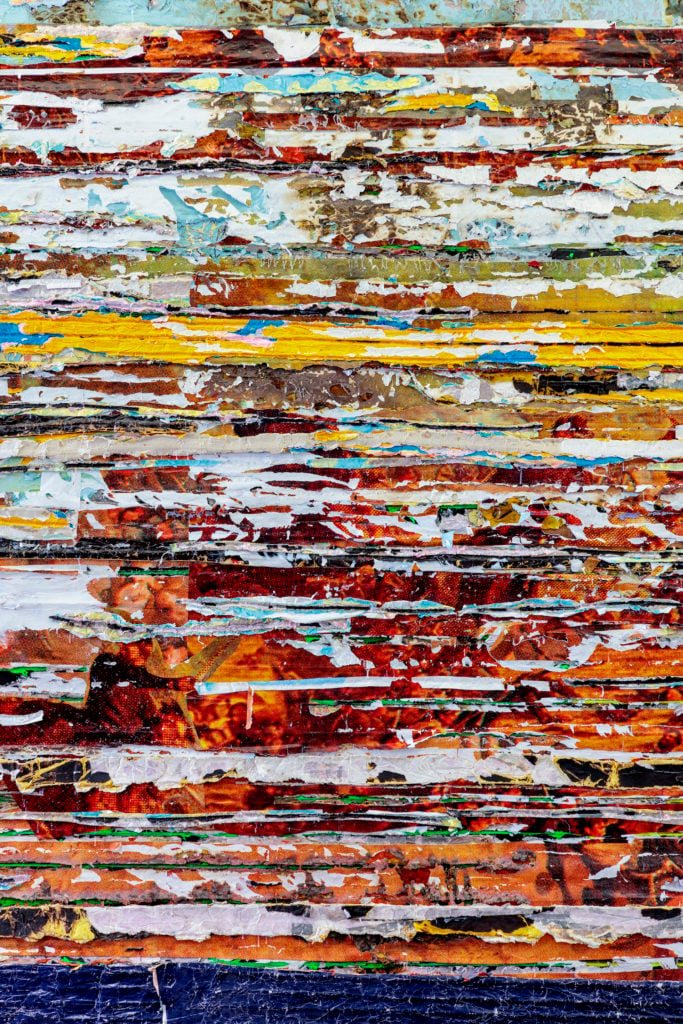
Mark Bradford, Pickett’s Charge (Battle), 2016–17 (detail). Photo courtesy of the artist and Hauser & Wirth/photographer Joshua White.
“Mark used the distinctive architecture of the Hirshhorn (and the very impossibility of creating a truly seamless cycloramic effect),” said Hirshhorn senior curator Evelyn Hankins in an email to artnet News, “to visually foreground the ways that historical narratives are in fact multi-faceted; how they are told from various viewpoints; how they change and are contested over time; and how inevitably all histories are filtered through different subjective filters.”
Philippoteaux painted four versions of The Battle of Gettysburg, two of which are still in existence. Inspired by the one at the Gettysburg National Military Park in Pennsylvania, Bradford took a full-scale reproduction of the work and collaged it on top of up to 10 layers of colored paper, cutting, shredding, and even blowtorching the surface, embedding ropes and cords into the work, and sometimes tearing them out to reveal the underlying strata.
Speaking to the Wall Street Journal, the artist called the piece “a cyclorama of political and historical palimpsest.”
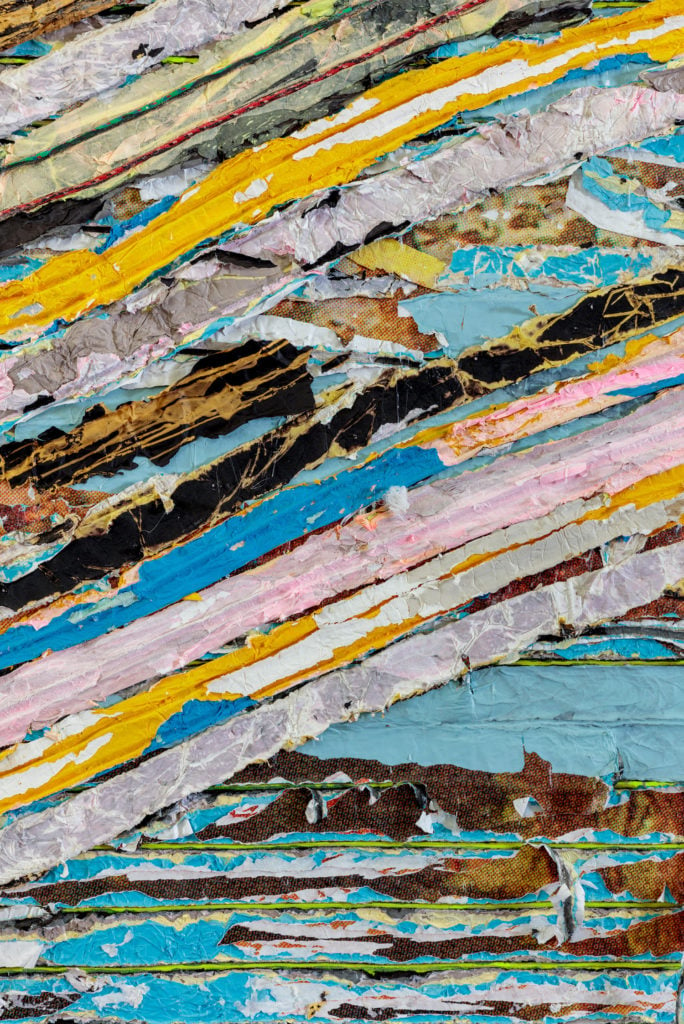
Mark Bradford, Pickett’s Charge (The High-Water Mark), 2016–17 (detail). Photo courtesy of the artist and Hauser & Wirth/photographer Joshua White.
“Mark’s distinctive ability to infuse the language of abstraction with social, political, and historical meaning places him at the very center of critical conversations in the art world and beyond, which is why I think his work is so powerfully resonant at this moment,” said Hankins. “I think one of the most remarkable aspects of the project is how the canvases feel like they have been here forever. Not only do the horizontal scores that run the length of all the canvases reiterate the cyclical nature of the building, but the abraded surfaces suggest how the work might have aged or changed over time.”
Bradford’s unique technique transformed Philippoteaux’s work into an abstract painting, rich with texture and as complex as America itself. His reinterpretation of this well-trod narrative merges the past and present, calling into question our understanding of our nation’s history. Even at the center, with the ability to see everything at once, is it ever truly possible to be objective about historical events?
It’s a message Bradford hopes resonates from the museum’s home on the National Mall. “There’s no way you can be here and not think about governance, there’s no way you can not think about the foundations of the United States of America,” he told the Post. “Sometimes the context is so great, the work comes naturally out of it.”
See more photos of the work below.
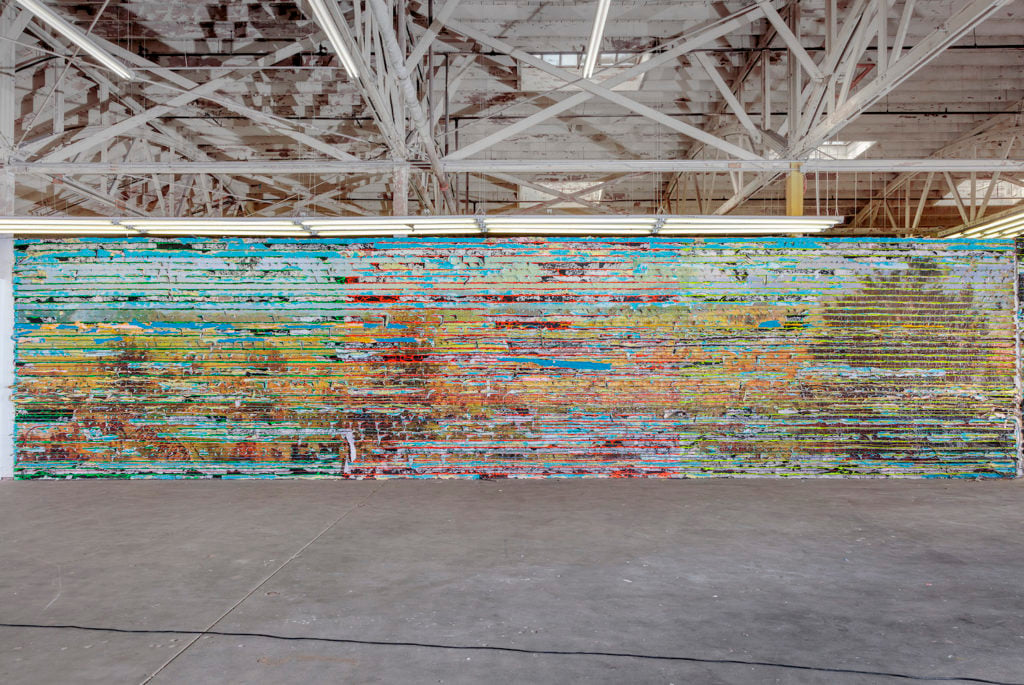
Mark Bradford, Pickett’s Charge (The Copse of Trees), 2016–17, installed in the artist’s studio. Photo courtesy of the artist and Hauser & Wirth/photographer Joshua White.
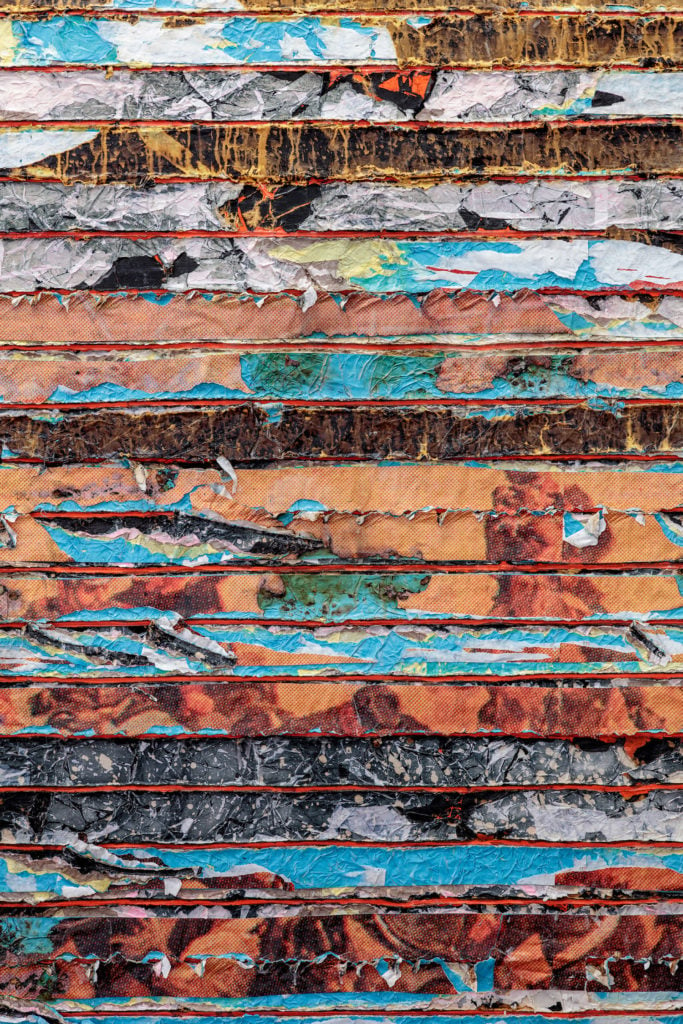
Mark Bradford, Pickett’s Charge (Two Men), 2016–17 (detail). Photo courtesy of the artist and Hauser & Wirth/photographer Joshua White.
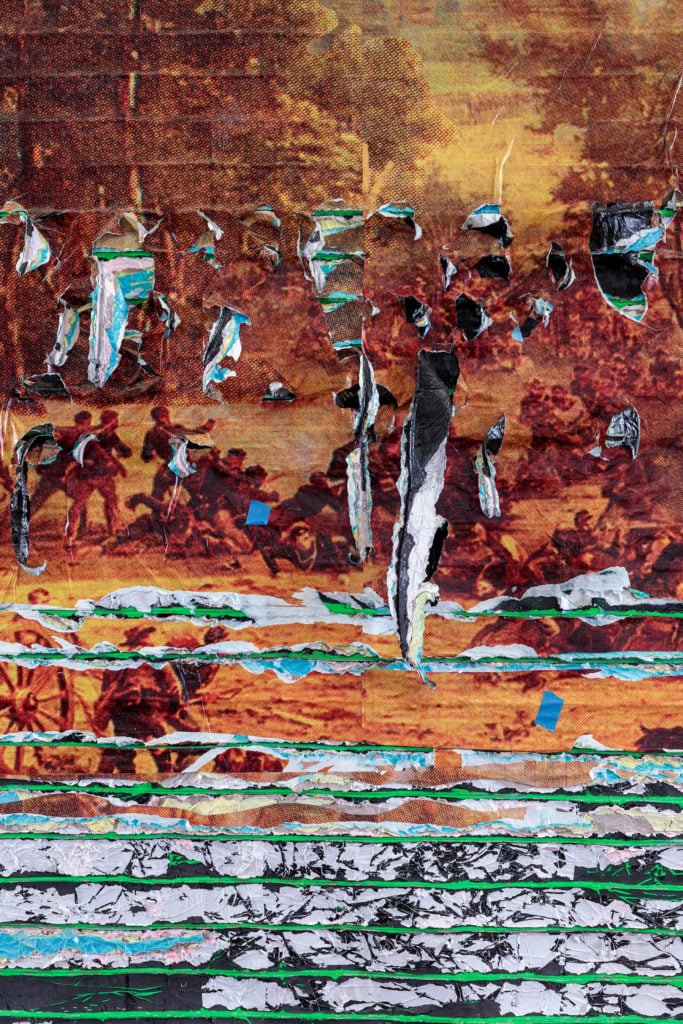
Mark Bradford, Pickett’s Charge (The Dead Horse), 2016–17 (detail). Photo courtesy of the artist and Hauser & Wirth/photographer Joshua White.
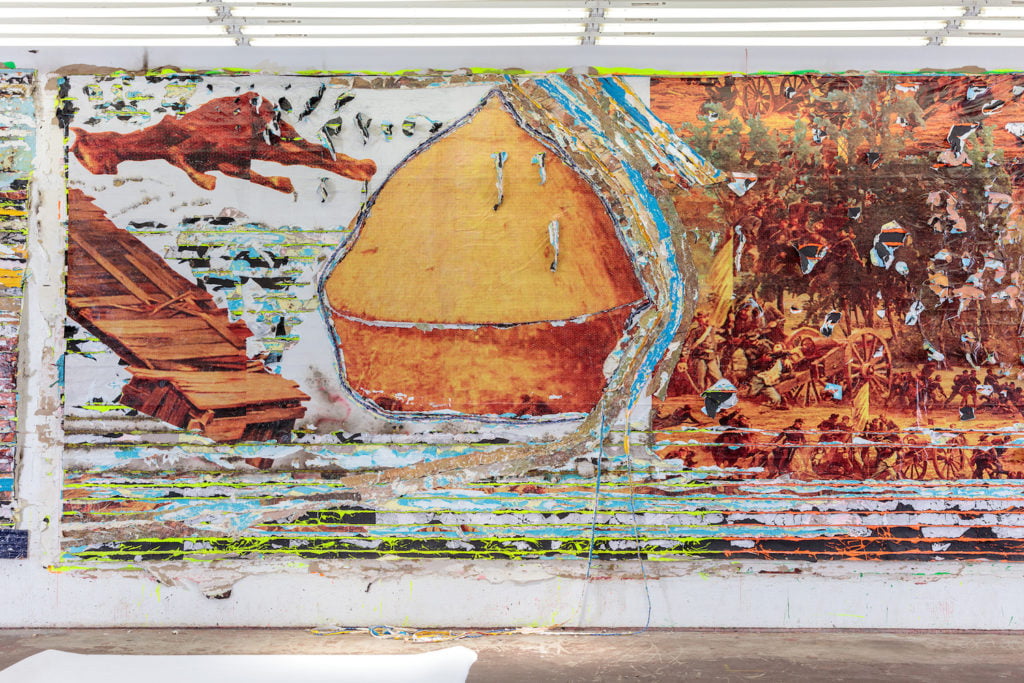
Mark Bradford, Pickett’s Charge (The Dead Horse), 2016–17 (detail). Photo courtesy of the artist and Hauser & Wirth/photographer Joshua White.
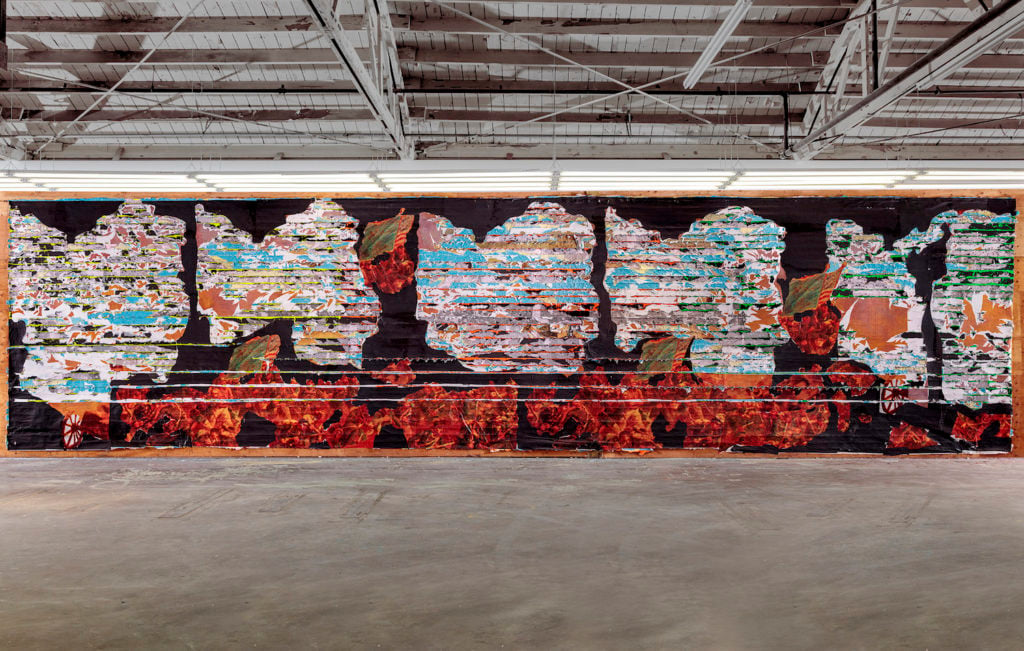
Mark Bradford, Pickett’s Charge (The Thunderous Cannonade), 2016–17, installed in the artist’s studio. Photo courtesy of the artist and Hauser & Wirth/photographer Joshua White.
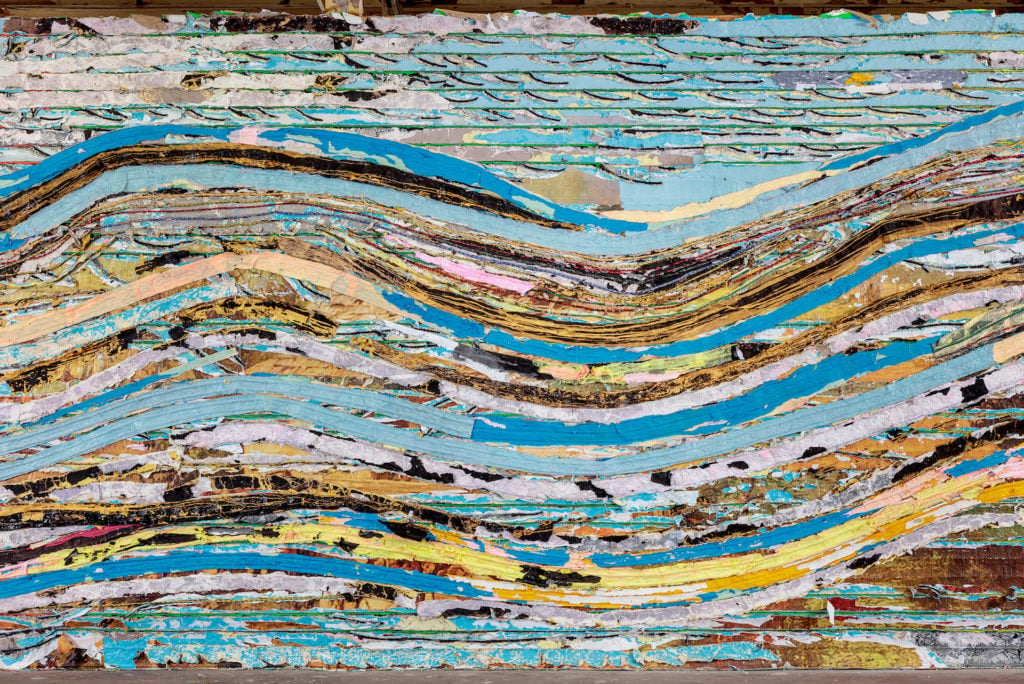
Mark Bradford, Pickett’s Charge (The High-Water Mark), 2016–17 (detail). Photo courtesy of the artist and Hauser & Wirth/photographer Joshua White.
“Mark Bradford: Pickett’s Charge” is on view at the Hirshhorn Museum and Sculpture Garden, the National Mall, Independence Avenue and 7th Street, Washington, DC, November 8, 2017–November 12, 2018.